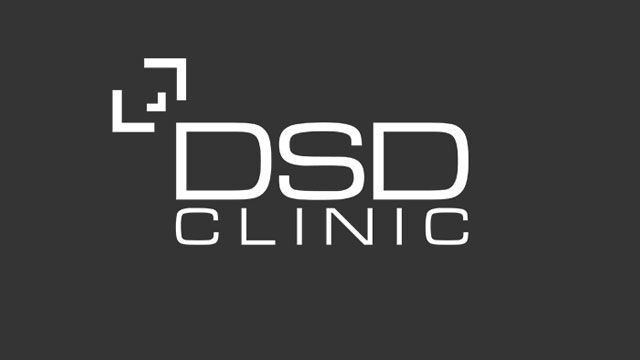
In recent years I’ve observed startling changes in the mouths of my women patients, particularly at midlife and beyond. This had led to a different focus on managing oral health for women.
Aging is no easy matter – we’re all affected in one way or another. Our mouth is affected more than we think.
Some changes occur as part of the natural progression of aging, such as reduced saliva flow, and others can be controlled by the lifestyle choices we make. The effects can be profound, leading to an escalation of dental decay or gum disease, and sometimes tooth loss. To understand how these changes might be affecting you, let’s discuss the chemical milieu that is your mouth.
Your Pearly Whites – The Teeth
Teeth form the hard structures in the mouth and they are covered in a strong glassy layer called enamel. Enamel gives teeth their white colour and is generally quite strong when it is intact. Tooth enamel is affected in 3 ways – decay (acid-producing bacteria eat holes in teeth), fracture (teeth weakened by big fillings get brittle with age), and erosion (dissolution of enamel in acids). Tooth enamel is highly susceptible to acid attack and can dissolve easily in many acids.
Acids are found widely in our diet:
- Citric acid: Juices, fruits, herbal tea and wine, lollies, flavour enhancer
- Ascorbic acid: Naturally occurring Vitamin C. Added to food to preserve it, added to bread to as an enhancer. Also includes powdered or liquid Vitamin C as a supplement.
- Acetic acid: Vinegars, pickles and sauces, flavour enhancer and preservative.
- Phosphoric acid: Added to many foods to enhance flavour and found in soft drinks, energy drinks, sauces
- Lactic Acid: Milk and milk products.
Some acids attack tooth enamel more readily – citric acid is one of the most effective at destroying tooth enamel, and ascorbic, acetic and phosphoric acids are a close second. These acids dissolve enamel making it thin and weak. Stomach acid also causes a great deal of damage. The obesity epidemic has increased the presence of stomach acid in the mouth through reflux.
The goal of modern dentistry is to keep enamel intact. We know that if a tooth is well covered with enamel it will last much longer.
The Bugs
The mouth is a very dirty place, with more varieties of bacteria than the bowel. Not all bacteria are bad – some are protective and are engaged in digestion and immune protection.
We’re born without any decay-causing bacteria and usually inherit these bugs from a parent, typically the mother. Transference and infection occurs through exchange of saliva when we first start to eat solid food or through loving contact such as kissing. Not everyone gets decay – partly because they don’t carry many of the decay-causing bacteria. Within families one sibling might have an active decay rate, mimicking a parent’s pattern, while others may develop little of no decay and resemble a parent with a healthy mouth. The reason is entirely related to the bacterial mix in the mouth of the individual. Bad bacteria thrive in sugar-rich, dry and acidic environments. Create an acid environment with a very acidic diet and bad bacteria will dominate, causing decay. Layer in a dry mouth and sugar – the bacterial fuel – and the mix is a lethal cocktail for teeth. Change the bacteria and decay goes away. Change the acidity, and both erosion and decay can disappear. Change the dryness and sugar, and decay doesn’t happen.
Saliva
This watery lubricating layer is the good guy in the mix. It helps good bacteria to grow, maintains a chemical balance in the mouth and is filled with many minerals that help to keep teeth strong and reverse decay on a daily basis. Saliva flow reduces with age. It also reduces markedly with stress, caffeine, and medication. Saliva reverses the damaging effects of acid foodstuffs and helps good bacteria to thrive.
Midlife Women
The changes seen in this age group revolve around saliva, and the loss of it, coupled with caffeine consumption, eating on the run and general busy-ness. Most women in their 40’s and 50’s are very busy. We fit in jobs, career development, families, marriage, aging parents and community activities. Finding time for ourselves can be a challenge. I have observed many patients in recent years who are chronically dehydrated with very dry mouths. This leads to an increase in decay or erosion, sensitive worn teeth and a hefty need for substantial dental work. Initially I thought that changing hormone levels were influencing saliva production but I couldn’t find a direct correlation between dry mouth and reduced hormone levels in the dental scientific literature. The changes were so blatant that it seemed to go beyond just normal aging. It wasn’t until I picked up Dr Libby Weavers book “Rushing Woman’s Syndrome” and it became obvious what was happening…Sympathetic Nervous System (SNS) Dominance as described in Dr Weaver’s book.
What is SNS Dominance? When we are so busy our body produces high levels of hormones such as cortisol and adrenaline. These hormones are responsible for the “urgency reaction”, often referred to as ‘fight or flight’. We all remember a time when we had butterflies in anticipation of a nervous moment – a stage performance, a job interview, a difficult conversation. Elevated adrenaline also left us with a dry mouth in those moments. Dr Weaver identifies that many women are in a perpetual state of urgency, explaining the dry mouth symptoms I have observed.
Mitigating The Risk
Those patients who present with active decay or evidence of acid erosion are advised of the problem. For many it is the first time they have had their issues diagnosed. It can be life changing to discover that decay is an infectious disease that can be treated, or that eating strategies can be damaging to saliva production and teeth.
The first stage of treatment is a comprehensive questionnaire to find out the factors that are detrimentally altering the chemical environment. We take a swab of bacteria to check the dominance of bad bacteria. We check saliva flow, quantity, quality. We ask about eating and drinking habits, caffeine intake, medication, sports – a wide range of lifestyle influences. We then help our patients to enjoy a balanced lifestyle with an understanding of how to alter the chemistry to avoid damage. Our approach doesn’t deny patients many things that they enjoy. It does provide tools, knowledge and products to tip the chemical balance back in favour of teeth.









